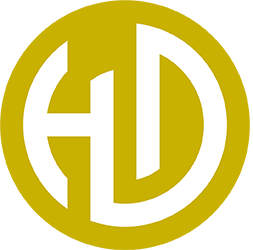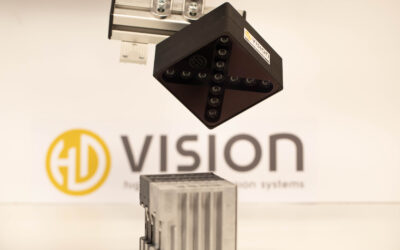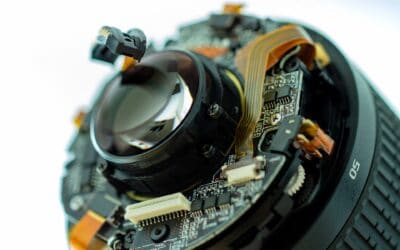Both the light field and the use of lasers are common imaging methods in Machine Vision. But what is the difference between the two techniques, where are the respective advantages?
Unfortunately, neither laser sword nor light show: laser triangulation is a widely used Machine Vision method. Light field technology, on the other hand, has not yet made such a name for itself – industrial solutions have only been available here for a few years. Although both techniques help in the use of 3D machine vision, there is more difference between the two than one would like to think.
Lasers in Machine Vision
Omen est nomen: Laser is the abbreviation for “light amplification by stimulated emission of radiation”. Behind this is a highly concentrated directed beam of light. Depending on the application, this beam can take on a wide variety of shapes. The resulting geometries help to create optical elements and effects. In this way, precise statements can be made about the nature and dimensions of workpieces of all kinds, even over long distances.
The most commonly used shapes include:
- Laser dots,
- Laser lines,
- Light sections,
- Point fields,
- Circles,
- Line grids.
In addition, these patterns can often be combined to obtain even more meaningful results about the surface texture of an object. All it takes is one or more suitable lasers, a recording camera – and possibly some creativity for the setup.
LASER TRIANGULATION FOR INDUSTRIAL MEASURING AND INSPECTION TASKS
If all this is available, a wide variety of measuring and inspection tasks can be solved using laser-based Machine Vision. For this laser triangulation, the angle between the camera and the lens must be known – together with the object points, this creates a triangle of points. Using this triangle, the individual object marks can be triangulated, i.e. calculated. By moving the laser – similar to a line scan camera – over the object, height profiles are created. Initially, these are available as a so-called range map, a kind of 2.5D image consisting of grey values and colour-coded distances. Only then is a point cloud calculated from this information.
Since lasers work very directionally and often with fine lines during scanning, the result is usually highly precise. If the measurement resolution per line is higher than a few pixels, an associated software calculates an exact image point from the measurement results.
However, laser-based image acquisition also has its limits: depending on the shape of the object, shading is a major challenge. This is because there is no longer a laser line behind a high object edge. As a result, the system can no longer detect hidden structures and potential object defects. The only thing that helps here is a different recording angle or the use of several laser camera devices.
Inspecting workpieces in motion? Unfortunately not an option for laser systems. They are dependent on static objects. Detection also becomes difficult for shiny or reflective subjects – the additionally required camera may then no longer be able to reliably distinguish between the laser and the part. And another type of surface poses a special challenge for lasers: rough surfaces lead to speckle patterns or laser granulation. A line then becomes a dotted or frayed pattern that makes exact measurement difficult.
CAUTION WHEN HANDLING LASERS
It should also be borne in mind that the use of lasers entails increased safety precautions in the workshop. This is because lasers (depending on their laser class) are dangerous to persons both on the skin and in the eyes due to their high light concentration. Particularly deceptive: scattered radiation from lasers often goes unnoticed. They also cause lasting damage to the retina.
Finally, caution also applies to the lasers themselves: Due to their high precision, they are very sensitive to external influences. In addition, the heat of the light emitted during operation causes the material to age more quickly. Short exposure times should therefore be the focus.
Light field in machine vision
The light field, on the other hand, follows a different technological approach: instead of precisely directed light, the light field relies on the totality of all light information of a scene. Described by the so-called plenoptic function, light rays from every location in the scene as well as the viewing location are thus used to draw a fully comprehensive light image.
PRACTICAL IMPLEMENTATION THROUGH CAMERA ARRAYS
In practice, the light field can be imaged using micro-lens arrays or multi-camera arrays. These help to detach the light field from a single shooting perspective. This reduces occlusions and gloss effects on metal, for example. The different shadows and perspectives also help to capture complex surfaces such as fibre composites or plastics. For this, light-field cameras usually do not require any complicated additional set-ups or lighting.
There is also no need for safety precautions – light field cameras do not cause any further light interference. At the same time, due to their multi-angle approach, they can often deal with prevailing conditions without any problems. This means that the light field can also be used multi-functionally. Depending on the software used, light field solutions are suitable for object detection, for inspection and measuring tasks as well as for the automated handling of workpieces. The depth information recorded by the array helps here.
The recording speed is also practical: even a short shutter duration is sufficient. From the information supplied, the system usually calculates a precise point cloud in less than a millisecond. The individual images can also be saved for additional documentation purposes. However, the storage requirement is not negligible.
Light field vs. laser – which method is better?
There is no general answer to this question. Depending on the specific application, one or the other imaging method can play to its strengths. Laser triangulation offers highly precise results, but with additional safety aspects. The light field trumps with less occlusions and gloss, but requires high storage capacities if all information is to be secured.
Our infographic also provides a compact overview of the various advantages and disadvantages of both systems. This way you can decide for yourself whether light field or laser is the right technique for your application:




